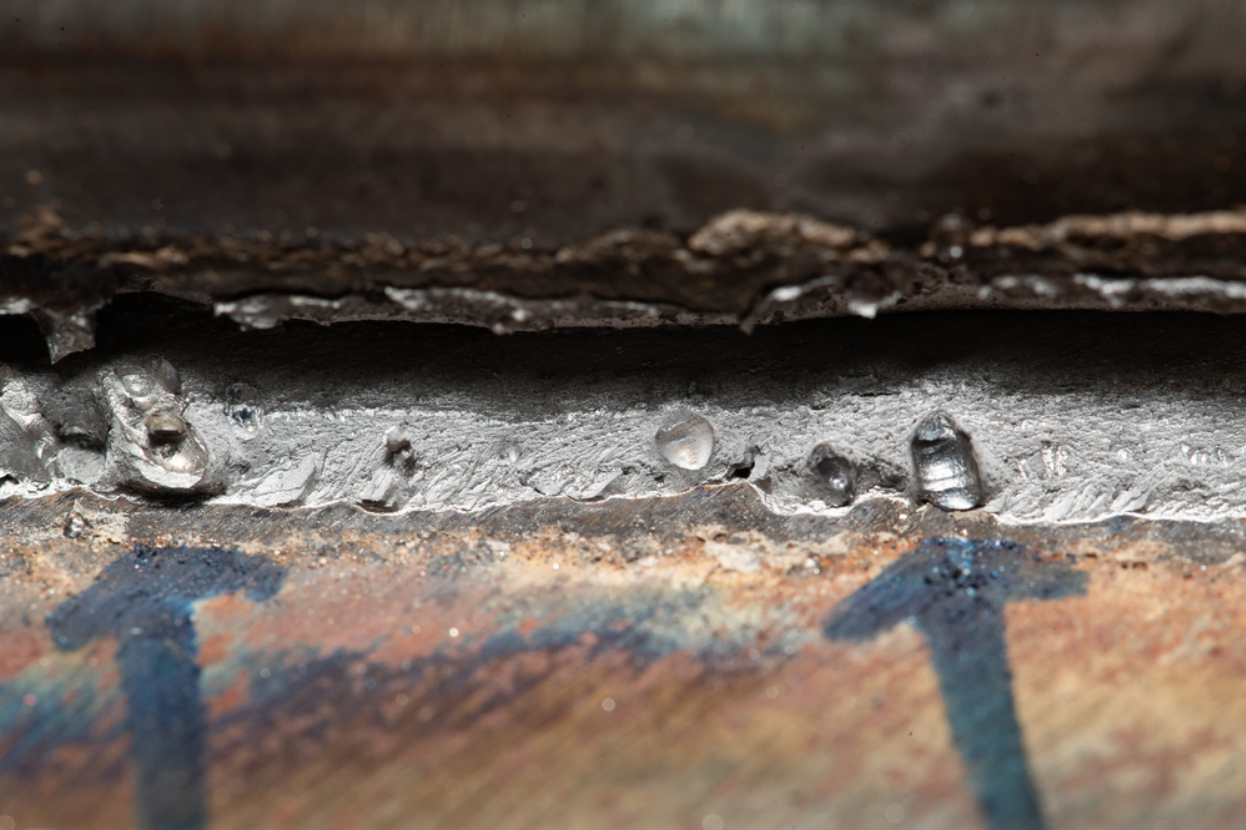Preventing Weld Undercut Demystified: Techniques for Success
Preventing Weld Undercut Demystified: Techniques for Success
Blog Article
Understanding the Causes and Solutions for Undercut Welding in Metal Fabrication Processes
In the realm of steel fabrication procedures, the incident of undercut welding presents a considerable difficulty that requires a detailed understanding of its reasons and practical services. The elaborate interplay of various factors during welding procedures can bring about this unwanted sensation, affecting the structural integrity and overall top quality of the bonded joints - Preventing weld undercut. By exploring the root causes of undercut welding and exploring effective therapeutic procedures, producers can elevate the standard of their handiwork and make certain the manufacturing of flawless steel parts
Typical Causes of Undercut Welding
Regularly forgotten in metal fabrication, undercut welding takes place due to various factors that demand precise interest and experience to be efficiently alleviated. In addition, inappropriate welding techniques, such as using the wrong welding angle or travel speed, can also contribute to damage development. The selection of welding criteria, such as voltage, existing, and cord feed rate, plays a substantial duty in the event of undercut welding.
Influence of Incorrect Welding Parameters
Imprecise welding criteria can dramatically endanger the honesty and top quality of bonded joints in metal construction processes. The impact of wrong welding criteria shows up in different methods, resulting in structural weak points and issues in the bonded components. One crucial aspect influenced by inappropriate welding specifications is the penetration deepness of the weld. Not enough warm input due to reduced welding currents or exceedingly high traveling rates can result in inadequate blend between the base steels, bring about incomplete joint penetration and damaged bonds. On the other hand, excessive warmth input brought on by high welding currents or sluggish traveling rates can lead to extreme and burn-through reinforcement, developing a fragile and unstable weld framework. Additionally, wrong specifications such as inappropriate voltage settings or wrong electrode angles can add to erratic weld grain profiles, lack of blend, and boosted chances of flaws like undercutting. As a result, precise focus to welding parameters is extremely important to guarantee the manufacturing of top quality welds with the wanted mechanical buildings and structural honesty.
Effect of Improper Torch Angle
Incorrect torch angle in welding operations can considerably affect the high quality and stability of the final weld joints in metal fabrication processes. The torch angle plays an important function in figuring out the warm input and distribution during welding. When the torch angle is incorrect, concerns such as damaging can emerge. Damaging is a typical welding problem where a groove develops along the weld toe, compromising the joint and compromising its structural honesty.
A lantern angle that is as well steep can lead to not enough infiltration, incomplete fusion, and raised spatter. On the various other hand, a torch angle that is too superficial can lead to excessive infiltration, burn-through, and distortion of the base product. Preventing weld undercut. Proper lantern angle is necessary for making sure consistent weld top quality, stamina, and appearance
To stop damaging and other issues triggered by improper lantern angles, welders should be educated to preserve the correct lantern angle throughout the welding process. Normal tracking and adjustment of lantern angles throughout welding can assist achieve audio welds with minimal flaws.
Role of Inadequate Welding Strategies

One more aspect of inadequate welding techniques is improper weld prep work. Poor cleansing of the base steels, inaccurate joint design, or insufficient side prep work can all add to undercut welding. Furthermore, inadequate shielding gas insurance coverage or making use of the incorrect sort of gas can result in insufficient blend and the formation of undercut problems.
To deal with the role of poor welding methods in metal manufacture procedures, it is vital to provide thorough training for welders. Appropriate education on welding criteria, joint preparation, and shielding gas option can help prevent undercut welding and make sure premium welds in steel construction projects.
Reliable Solutions for Undercut Welding
Dealing with undercut welding in steel construction calls for carrying out effective options to enhance weld high quality and structural stability. One of the main solutions to deal with undercut is to adjust welding specifications such as voltage, existing, and travel rate to ensure appropriate heat input and combination. By fine-tuning these setups, welders can avoid too straight from the source much melting of the base metal and filler material, minimizing the likelihood of undercut development.
In addition, proper joint prep work is crucial in stopping undercut. Making certain clean base metal surface areas without pollutants and utilizing the ideal bevel angle can help promote far better weld infiltration and reduce the danger of undercut - Preventing weld undercut. Using ideal welding techniques, such as oscillating the lantern or weaving, can additionally assist in distributing warmth uniformly and loading the weld joint appropriately, reducing the possibility of undercut problems
In addition, choosing the correct welding consumables, consisting of electrodes and filler metals, is important in minimizing undercut. Using materials with suitable chemical structures and mechanical properties can site link add to achieving sound welds with minimal undercut. Regular evaluation and quality control steps ought to likewise be executed to discover and attend to undercut problems quickly, guaranteeing the general integrity of fabricated metal parts.

Verdict
In verdict, comprehending the causes and services for undercut welding in metal fabrication procedures is vital for accomplishing top notch welds. By dealing with common reasons such as wrong welding specifications, improper lantern angle, and poor welding methods, welders can avoid damaging and make certain strong, durable welds. It is important to focus on these elements and carry out efficient solutions to boost the general welding procedure and end product top quality.

Report this page